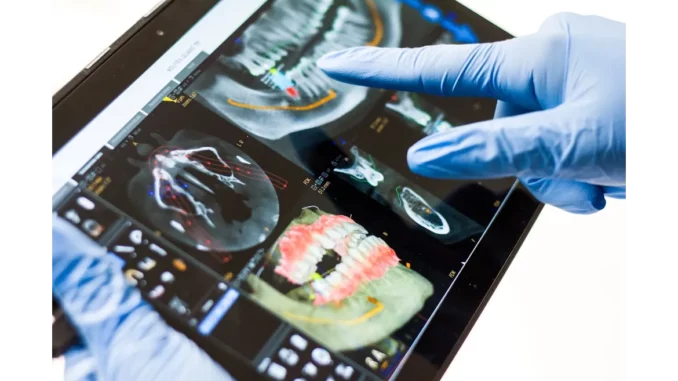
During a recent visit to a prominent medical centre in Chicago, I had the privilege of engaging in a thought-provoking discussion with Dr. Emily Carter, a distinguished radiologist renowned for her keen insights into AI-powered imaging technologies. Our conversation delved into the transformative potential of such innovations, particularly in the realm of medical imaging, and centred on GE HealthCare’s recent advances, notably the CleaRecon DL and the OnWatch Predict system.
Dr. Carter exuded enthusiasm about the current landscape of medical imaging, marked by rapid advancements in AI technology. She emphasised how these developments are reshaping patient care with unprecedented precision and clarity. “We’re witnessing a pivotal moment in medical imaging,” she remarked from her bustling office. The conversation turned to CleaRecon DL, GE HealthCare’s cutting-edge technology designed to enhance cone-beam computed tomography (CBCT) images. “CBCT has always been invaluable for interventional procedures due to its three-dimensional visualisation of anatomy,” Dr. Carter explained. “Yet, the image quality often suffers due to artifacts and streaks. CleaRecon DL addresses these challenges head-on with deep learning algorithms that reconstruct images, reducing noise and enhancing clarity.”
Dr. Carter’s insights underscored the significance of such technological advancements. With CleaRecon DL, clinicians can interpret images with heightened confidence, facilitating more accurate diagnoses and treatment plans. The clarity of images is not merely about seeing more; it is fundamentally about seeing better. As our discussion unfolded, Dr. Carter highlighted the importance of GE HealthCare’s 510(k) submission for FDA approval—a critical step ensuring the safety and efficacy of new medical devices. Once approved, CleaRecon DL is poised to become a mainstay in interventional suites nationwide.
In tandem with CleaRecon DL, GE HealthCare is also launching OnWatch Predict, a predictive monitoring tool that anticipates potential equipment failures. Dr. Carter poignantly described it as akin to having a “crystal ball” for equipment maintenance. By forecasting system failures, OnWatch Predict allows issues to be addressed proactively, preserving the integrity of procedures where precision and timing are crucial. Such innovations not only bolster the reliability of equipment but also improve the overall patient experience by enabling more efficient and accurate procedures, consequently reducing the risk of complications.
Our conversation naturally expanded to consider the broader implications of AI integration in medical practice. Dr. Carter noted the potential for AI to democratise healthcare, making advanced imaging techniques more accessible to a wider range of facilities. “AI can bridge gaps in expertise,” she observed, “allowing even smaller clinics to deliver top-notch diagnostic services.” Nevertheless, she maintained that AI is a tool to augment, not replace, human expertise. “AI complements our skills,” she emphasised. “These technologies should enhance our capabilities, enabling us to focus more on patient care and clinical decision-making.”
As our time together concluded, Dr. Carter expressed an optimistic vision for the future of medical imaging. “We are on the brink of a new era,” she stated. “With innovations like CleaRecon DL and OnWatch Predict, healthcare is becoming not only more advanced but also more patient-centric.” Departing from Dr. Carter’s office, I reflected on the profound insights she had shared. It is evident that AI will assume an increasingly pivotal role in healthcare, promising to refine the precision and efficiency of medical imaging. As these technologies continue to evolve, they hold the potential to fundamentally reshape patient care, making it more accessible, effective, and aligned with the needs of a diverse patient population.


Be the first to comment